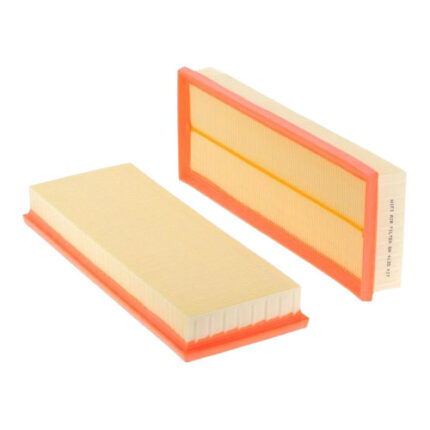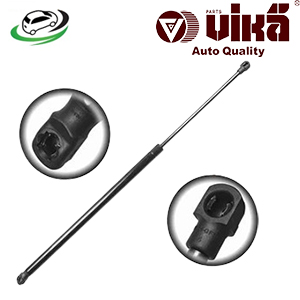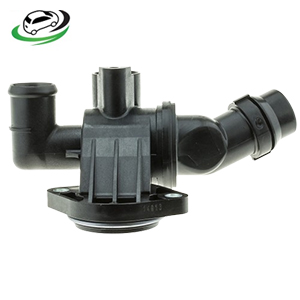-8%
Get Engine Coolant Thermostat AUDI A3 8P 2.0T/TT MKII 2.0T / VW EOS 2.0T/Golf V 2.0T/Jetta V 2.0T/Passat B6 2.0T 9805552080
The engine coolant thermostat is a critical component in a vehicle’s cooling system, responsible for regulating the flow of coolant between the engine and the radiator. By controlling the engine’s operating temperature, the thermostat ensures that the engine runs efficiently and prevents it from overheating or running too cold. Here’s a detailed explanation of what the engine coolant thermostat is, how it works, its importance, common issues, and maintenance tips.
What is an Engine Coolant Thermostat?
The engine coolant thermostat is a small but vital device located between the engine and the radiator. It’s usually housed in the thermostat housing, which is connected to the engine’s coolant outlet. The thermostat controls the flow of coolant based on the engine’s temperature, allowing the engine to reach and maintain its optimal operating temperature.
How Does the Engine Coolant Thermostat Work?
The thermostat operates using a temperature-sensitive wax pellet that expands and contracts based on the engine’s temperature. Here’s a step-by-step explanation of its operation:
- Cold Engine Start: When the engine is cold, the thermostat is closed. This prevents coolant from flowing to the radiator, allowing the engine to warm up quickly. During this time, the coolant circulates only within the engine block and the heater core.
- Reaching Operating Temperature: As the engine warms up, the coolant absorbs heat, raising its temperature. Once the coolant reaches a specific temperature (usually between 180°F and 195°F or 82°C to 91°C), the wax pellet inside the thermostat begins to expand.
- Opening the Thermostat: As the wax pellet expands, it pushes a piston or valve, opening the thermostat. This allows the hot coolant to flow from the engine to the radiator, where it is cooled by air passing through the radiator fins.
- Regulating Temperature: The thermostat continuously adjusts its position, opening and closing slightly to regulate the coolant flow. This ensures that the engine maintains its optimal operating temperature, preventing overheating or running too cold.
- Maintaining Efficiency: By controlling the engine’s temperature, the thermostat helps maintain fuel efficiency, reduce emissions, and prevent engine wear. It plays a crucial role in ensuring the engine operates within its designed temperature range.
Importance of the Engine Coolant Thermostat
The engine coolant thermostat is essential for several reasons:
- Efficient Engine Operation: The thermostat ensures that the engine reaches its optimal operating temperature as quickly as possible. This is important because a cold engine runs less efficiently, consumes more fuel, and produces higher emissions.
- Preventing Overheating: By regulating the flow of coolant, the thermostat helps prevent the engine from overheating. Overheating can cause serious damage to the engine, including warped cylinder heads, blown head gaskets, and even complete engine failure.
- Reducing Engine Wear: A properly functioning thermostat helps reduce engine wear by maintaining a stable operating temperature. This minimizes thermal stress on engine components, extending their lifespan and improving overall reliability.
- Improving Fuel Efficiency: The thermostat helps the engine reach its optimal temperature quickly, reducing the time the engine spends running in a cold, less efficient state. This improves fuel efficiency and reduces emissions.
- Ensuring Cabin Comfort: The thermostat also plays a role in the vehicle’s heating system. By controlling the engine temperature, it ensures that the cabin heater can provide warm air to the interior, improving passenger comfort.
Common Issues with the Engine Coolant Thermostat
Like any mechanical component, the engine coolant thermostat can experience issues over time. Some common problems include:
- Stuck Closed Thermostat: If the thermostat becomes stuck in the closed position, coolant cannot flow to the radiator, causing the engine to overheat. This can lead to serious engine damage if not addressed promptly.
- Stuck Open Thermostat: If the thermostat is stuck in the open position, coolant flows continuously to the radiator, preventing the engine from reaching its optimal operating temperature. This can cause the engine to run cold, leading to reduced fuel efficiency, increased emissions, and poor heater performance.
- Faulty Thermostat: Over time, the thermostat’s internal components, such as the wax pellet or spring, may wear out or fail. A faulty thermostat may not open or close properly, leading to temperature regulation issues.
- Leaks in the Thermostat Housing: The thermostat is housed in a metal or plastic housing that is sealed with a gasket. Over time, the gasket may wear out or the housing may develop cracks, leading to coolant leaks. Leaks can result in low coolant levels, causing the engine to overheat.
- Corrosion and Deposits: The thermostat can become clogged with rust, scale, or other deposits from the coolant. This can impede its operation and prevent it from opening or closing properly.
Signs of a Failing Engine Coolant Thermostat
A failing thermostat can cause various symptoms, including:
- Overheating: One of the most obvious signs of a thermostat issue is engine overheating. If the thermostat is stuck closed, the engine temperature will rise quickly, and the temperature gauge will show a high reading.
- Cool Running: If the thermostat is stuck open, the engine may run cooler than normal. The temperature gauge may show a low reading, and the heater may not provide warm air.
- Erratic Temperature Fluctuations: A faulty thermostat may cause the engine temperature to fluctuate erratically, with the temperature gauge moving up and down unpredictably.
- Poor Heater Performance: If the thermostat is not functioning correctly, the engine may not reach its optimal temperature, leading to poor heater performance. The heater may blow cool air instead of warm air.
- Coolant Leaks: Leaks around the thermostat housing or under the vehicle may indicate a problem with the thermostat or its housing. Coolant leaks can lead to low coolant levels and overheating.
Maintaining the Engine Coolant Thermostat
Proper maintenance of the engine coolant thermostat is essential for ensuring the cooling system’s effectiveness and preventing engine damage. Here are some tips for maintaining the thermostat:
- Regular Coolant Changes: Changing the coolant at the recommended intervals helps prevent corrosion and the buildup of deposits that can clog the thermostat. Always use the correct type of coolant for your vehicle.
- Inspecting the Thermostat: During routine maintenance, inspect the thermostat and its housing for signs of wear, damage, or leaks. Replace the thermostat if it shows any signs of malfunction.
- Check the Temperature Gauge: Pay attention to the temperature gauge on your dashboard. If you notice any unusual readings, such as the engine running too hot or too cold, it could indicate a problem with the thermostat.
- Replace the Thermostat as Needed: If you experience symptoms of a failing thermostat, such as overheating or erratic temperature fluctuations, it’s important to replace the thermostat promptly. In some cases, it’s recommended to replace the thermostat when replacing the coolant or performing major engine repairs.
- Monitor Coolant Levels: Regularly check the coolant level in the radiator and overflow tank. Low coolant levels can cause the engine to overheat and damage the thermostat. Top up the coolant as needed and check for leaks.
Replacing the Engine Coolant Thermostat
Replacing the engine coolant thermostat is a relatively straightforward process, but it should be done carefully to avoid damaging the cooling system. Here’s a general guide:
- Preparation: Gather the necessary tools, a new thermostat, and a replacement gasket or sealant. Ensure the engine is cool before starting the work.
- Drain the Coolant: Drain the coolant from the radiator into a suitable container. This will prevent coolant from spilling when you remove the thermostat housing.
- Remove the Thermostat Housing: Locate the thermostat housing, usually connected to the engine block and radiator hose. Remove the bolts or clamps securing the housing, then carefully lift the housing to access the thermostat.
- Remove the Old Thermostat: Take out the old thermostat and gasket. Clean the mating surfaces of the housing and engine block to remove any old gasket material or debris.
- Install the New Thermostat: Place the new thermostat in the housing, ensuring it is oriented correctly (usually with the spring side facing the engine). Install a new gasket or apply sealant as required.
- Reattach the Housing: Reattach the thermostat housing and secure it with bolts or clamps. Tighten them evenly to prevent leaks.
- Refill the Coolant: Refill the radiator with coolant, ensuring the system is properly bled of air bubbles. This prevents air pockets from forming, which could cause overheating.
- Check for Leaks: Start the engine and let it warm up. Check for any leaks around the thermostat housing and monitor the temperature gauge to ensure the thermostat is functioning correctly.
Follow us on Facebook for more parts.



